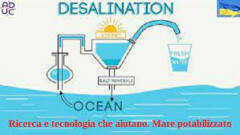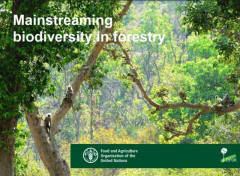Nuovi studi OGM Dimostrano la 'sostanziale non equivalenza'
Inviamo la traduzione della prima parte dell’articolo pubblicato su www.i-sis.org.uk (http://www.i-sis.org.uk/Substantial_Non-Equivalence.php) sulla Sostanziale non-Equivalenza tra gli alimenti geneticamente modificati e i loro equivalenti non geneticamente modificati.
Traduzione:
Nuovi studi OGM Dimostrano la 'sostanziale non equivalenza'
Pubblicato il 21 Febbraio 2014 da I-SISQuesti studi documentano le sostanziali differenze tra mais e soia GM rispetto alle rispettive specie convenzionali non-GM, esponendo un regime normativo permissivo che ha fallito miseramente nella tutela della salute pubblica e della biodiversità. D.ssa Eva Sirinathsinghji .Diversi nuovi studi effettuati da scienziati indipendenti del settore biotech stanno mostrando evidenti differenze tra gli OGM e le loro rispettive specie non-OGM.
Il principio di 'equivalenza sostanziale'
Il concetto di 'equivalenza sostanziale' è stato introdotto nel 1993 dall'Organizzazione per lo Sviluppo Economico (OCSE), un'organizzazione economica e del commercio internazionale, non già un Ente per la salute pubblica. Ci sono molte buone ragioni per i consumatori di non sentirsi protetti da queste politiche di regolamentazione, anche perché il principio stesso è stato progettato per essere il più vago possibile e aperto all'interpretazione consentendo così di approvare quasi tutti gli OGM presentati. Alcune valutazioni indipendenti di sostanziale equivalenza hanno mostrato come questa pratica non ben definita non solo è insufficiente, ma inaffidabile, e nuovi studi lo confermano più chiaramente.
Fonte: AmbienteScienze Cremona
Vedesi qui di seguito Studi tratti dallo stesso articolo e riportati in inglese
Studies in Egypt showed substantial non-equivalence and toxicity for GM corn
In April 2013, an Egyptian publication led by Professor El-Sayed Shaltout at Alexandria University found that Monsanto’s 810 Corn (Ajeeb-YG®), modified to express the insecticidal Bt Cry1Ab gene, has increased total protein, crude fat, crude fibre& total saccharides and decreased starch content compared with non-GM Ajeeb corn. Abnormal levels of certain amino acids, fatty acids and elements were also recorded [6]. These compositional differences only gave the merest hint of the toxicity of the GM corn revealed in previous male rat feeding studies conducted by the same team documenting a wide range of organ and tissue abnormalities [7, 8]. Liver cells displayed vacuolation and fatty degeneration. The kidneys had congested blood vessels and dilation of renal tubules. The testes showed signs of necrosis and desquamation of spermatogoneal germ cells lining the seminiferous tubules. The spleens were congested with slight lymphocytic depletion. The small intestines showed hyperplasia and hyperactivation of mucous secretory glands, with necrosis of intestinal villi. Most certainly, the GM corn was not substantially equivalent to non-GM corn.
GM and non-GM soybeans not substantially equivalent
A more recent study led by Thomas Bøhn at the Norwegian Centre for Biosafety [9] tested 31 batches of whole soybeans from Iowa, US in three categories: 1) GM glyphosate-tolerant soy; 2) unmodified soy cultivated using conventional “chemical” regime and 3) unmodified organically cultivated soy. The three groups were analysed for chemical contamination (organochlorine, organophosphorus, pyrethroides, PCBs, glyphosate and AMPA (aminomethylphosponic acid - the major degradation product of glyphosate) based on the list of pesticide brand names used by the farmers) as well as nutritional content. Testing pesticide levels is important as substantial equivalence assessments for GM glyphosate-tolerant soy were not previously done with herbicide residue in the crop despite common knowledge that glyphosate is actually taken into the plant, and also alters the metabolism and biochemistry, and hence the chemical composition of crops. Any assessment of its equivalence is obviously irrelevant when glyphosate is not included.
The results couldn’t be clearer. As shown in Figure 1, glyphosate and AMPA were only present in GM soy samples and not at all in conventional non-GM and organic varieties. In the GM-soy samples, the concentration of AMPA (mean concentration = 5.74 mg/kg) was on average nearly twice as high as glyphosate (3.26 mg/kg). Other herbicides were detected: Fluazifop-P a selective phenoxy herbicide, was found at a concentration of 0.078 mg/kg in one of the GM-soy samples, malathion was found at a concentration of 0.02 mg/kg in one of the conventional soy samples and Dieldrin was found at a concentration of 0.002 mg/kg in one of the organic soy samples. No other residues were detected. Additional testing for pesticide residues in pooled samples of GM, conventional and organic soybeans showed trace-levels of Alpha-endosulfane, Trans-nonachlor and Trans-chlordane, all close to the detection limit of 0.05 µg/kg and in all soy types. Dieldrin was also found in very low levels with 0.51, 0.45 and 0.6 µg/kg in GM, conventional and organic soybeans, respectively.
The researchers looked at chemical composition of the soy samples including composition of protein, fat and sugar content, as well as individual amino acids, vitamins, fatty acids and elements. Organic soy samples show significant differences from both GM and conventional non-GM soybean samples, with higher and lower levels of protein and saturated fats respectively, plus significant differences in levels of total as well as individual levels of amino acids, vitamins, and minerals. A further statistical multivariate analysis of the compositional results found without exception that each individual soybean sample could be discriminated statistically into their respective agricultural background, even excluding the data on glyphosate/AMPA levels. The organic soybean was nutritionally superior to both conventionally grown non-GM soybean and GM soybean.
Profiling technologies for biosafety analyses
Profiling technologies, such as proteomics, allow the simultaneous measurement and comparison of thousands of plant components, in this case proteins, without prior knowledge of their identity. These methods are now being employed by independent scientists to provide a more thorough, unbiased and global profile of GM crop composition for risk assessment.
A new study conducted in Brazil by Agapito-Tenfen and colleagues at the Federal University of Santa Catarina is an example of this type of analysis, with global protein expression analysed in GM MON810 compared with the non-GM maize control grown in two different environmental conditions. Analysis of the total leaf-derived proteome showed 32 differentially expressed proteins (out of an average 458 and 643 detected proteins for each condition) between GM and non-GM maize with most of them involved in carbohydrate metabolism, stress response as well as genetic information processing such as post-translational modification of newly made proteins [10]. Sixteen proteins were differentially expressed between GM and non-GM maize at each of the two growing locations (Campos Novos and Chapecó). In Campos Novos, the experiment found 8 proteins detectable only in the GM samples, the remaining 8 were absent in the GM samples. In Chapecó, there were seven proteins exclusive to GM plants and seven to non-GM plants. 2 proteins showed quantitative differences in expression. For example, glyceraldehydes 3-phosphate degydrogenase (GAPDH) and fructose-biphosphate, ferredoxin-NAPD was exclusive to GM plants in Capos Novos and relate directly to energy metabolism. When it comes to carbohydrate metabolism, this is consistent with previous studies that found increased sugar levels in MON810 plants, with up 14, 7 and 1.8-fold increases in glucose, fructose and sucrose respectively [11]. Indeed, maize plants go through many developmental stages in their leaves that exclusively rely on carbohydrate metabolism. Further, transgenes with high constitutive promoters have been shown to have a high energetic cost e.g. cauliflower mosaic virus 35S promoter [12, 13], which the authors speculate may cause a problem for transgenic plants.
Stress response genes e.g. those related to glutathione metabolism (glyoxylase 1 and IN2-1), peroxidises and pathogenesis-related protein were expressed only in non-GM plants. It was also revealed that 2-cysteine peroxiredoxin BAS1 (2-CP) proteins are over-expressed in GM plants from both locations. Peroxidases are of great importance for eliminating H2O2 resulting from oxidative phosphorylation.
Four genetic information processing proteins were differentially expressed. Two of these were only present in GM plants from Campos Novos, the adenine phosphoribosyl transferase (APT), and the ATP-dependent Clp protease ATP-binding subunit ClpA (Clp-ClpA). APT works on adenine salvage in plants, while Clp-ClpA proteases exert unfoldase activity, playing a key role in regulating the availability of certain short-lived regulatory proteins. Chaperonin protein and S-adenosylmethionine synthetase 1 were upregulated in non-GM plants. S-adenosylmethionine synthetase 1 is involved in transmethylation of proteins, nucleic acids, polysaccharides and fatty acids. Interestingly, many of these genetic information processing proteins are directly related to gene expression control.
This study is the first of its kind to use such technologies to assess how both the environment and genotype can influence plant composition in Brazil and highlights the routine profiling analyses now widely available for proteins, transcripts and metabolites that are still not required by governments for regulatory approval as they should be.
Of further note in this study is the effect of environmental conditions on the composition of crops. GM proponents often argue that other factors such as environmental conditions as well as hybrid varieties determine the composition and physiology of a plant but genetic modification can influence such conditions. Indeed, the environment did cause variation in composition of the crops, but interestingly, it appeared that the GM maize protein expression profile was more affected by the environment.
To conclude, the numerous differences demonstrated between GM varieties and their non-GM counterpart may well impact consumer health and biodiversity, and clearly exposes the substantial equivalence principle as pseudoscience. In reality, genetic modification causes very real and substantial, unpredictable and uncontrollable changes in the host genome including mutations, and rearrangements as well as new transcripts and proteins. Further, glyphosate and GM crops have already been shown to cause damage to both health and the environment in many independent studies (see [14] Ban GMOs Now, ISIS special report). This is now fully confirmed in the new studies.
2014-02-25



























